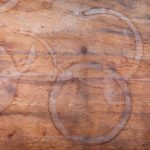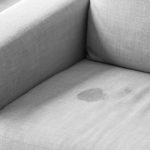Unwanted water marks on wood surfaces can be a frustrating sight, marring the natural beauty of furniture, flooring, or decor.
But fear not – there are effective strategies to tackle these blemishes and restore the original charm to your wooden surfaces.
This guide explores various techniques and tips to help you bid farewell to water marks and rejuvenate your wood floors and furniture.
So, whether you’re dealing with delicate veneer, lustrous lacquer, synthetic laminate, or natural wood, read on to discover the best cleaning methods for removing water stains.
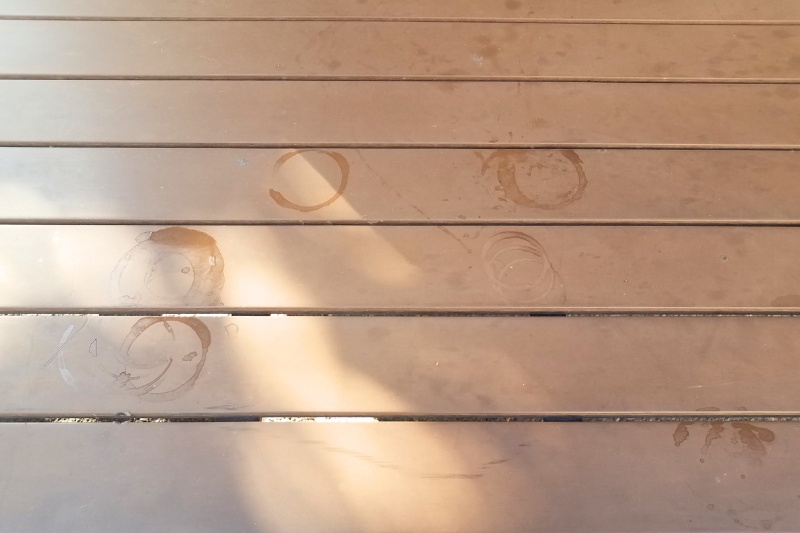
How to Remove Water Marks from Natural Wood
Removing water stains from natural solid wood can be challenging. On the one hand, natural wood doesn’t have an outer layer (like laminate and lacquer) that you must be careful to protect.
This means you can use harsher cleaning products and easily repaint or vanish the wood at home if needed, without any specific expertise.
However, the tannins in natural wood can react with the water and cause hard-to-remove dark stains rather than typical white water marks.
These darker stains are more challenging to remove and are more likely to occur in solid wood pieces of furniture.
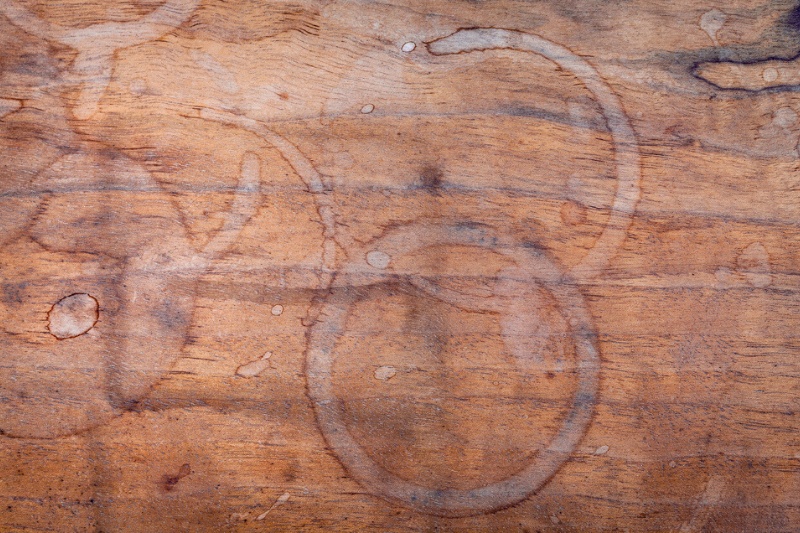
Regardless of which type of stain you’re stuck with, here is a breakdown of the process:
- Sand the surface: For white water marks, lightly sand the stained area using fine-grit sandpaper to remove the very top layers of wood fibres. Ensure that you sand in the direction of the wood grain to avoid creating scratches.
- Use a hair dryer: You can use heat if sanding doesn’t work. Place a clean, dry cloth over the stain and move a hair dryer (low to medium heat setting) over the top. The heat will cause the moisture to evaporate and the finish to expand, helping the stain to disappear.
- Toothpaste or bicarbonate of soda: For persistent white water marks, apply a small amount of non-gel toothpaste or a paste made from bicarbonate of soda (also known as baking soda) and water onto the stain. Gently rub the paste in the direction of the wood grain, then wipe it off.
- Try the vinegar and olive oil method: Mix equal parts of white vinegar and olive oil in a bowl and apply using a cloth. Gently rub the water marks, following the grain. The vinegar can dissolve mineral deposits, and the oil can help rehydrate the wood.
- Bleach black stains: Dark water stains are harder to remove and might require you to use bleaching agents on wood. However, bleach can damage hardwood floors and isn’t always suitable. Consider consulting a professional woodworker if the stain is severe.
How to Remove Water Stains from Lacquered Wood
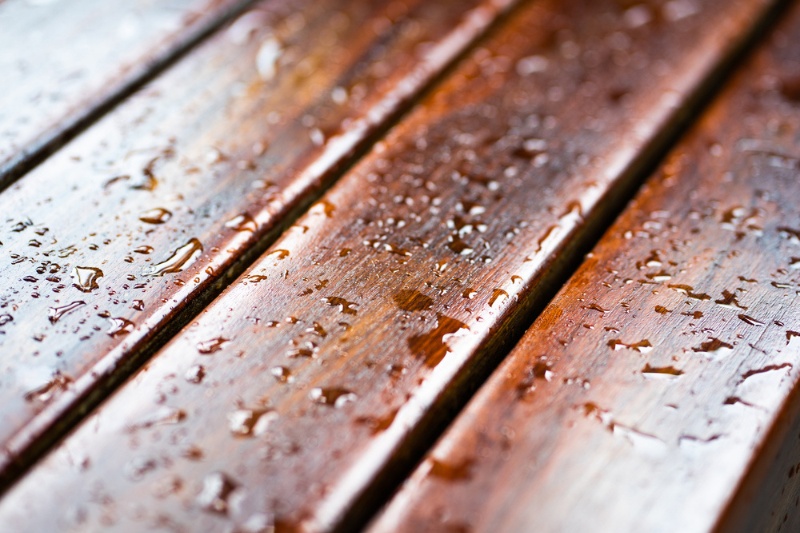
Lacquered wood is wood coated in a varnish that helps to protect it and give make it shine.
Removing water stains from lacquered wood can be a bit tricky as the lacquer finish is sensitive to abrasion and harsh chemicals. However, we have found an effective method, as explained below.
Make sure you follow the steps in this order. We purposefully started with the gentlest stain removal method and gradually moved towards harsher products to help avoid unnecessary damage:
- Assess the damage: Before attempting any cleaning, assess the severity of the water stain. If the stain has only affected the surface and hasn’t deeply penetrated the lacquer, you have a better chance of removing it.
- Use a mild cleaner: Dampen a soft cloth with water and washing-up liquid. Gently rub the water mark, being careful not to scrub too hard (this could damage the lacquer finish). Wipe the area with a clean, damp cloth afterwards to remove any soap residue.
- Apply Vaseline or mayonnaise: Apply a small amount of Vaseline or mayonnaise to the stain and let it sit for a few hours or overnight. The oil in these substances might help lift the stain. Next, wipe away the substance and see if the mark has been eliminated.
- Use a non-gel toothpaste: Non-gel toothpaste can help remove stains from wood. Apply a small amount to the stain, then gently rub it in with a soft cloth. Wipe clean and assess if the marks have improved. You can repeat the process as needed.
- Try mineral spirits: Moisten a soft cloth with mineral spirits and gently rub the stain. These solvents can also dissolve the lacquer finish, so test them on an inconspicuous area first. After using the solvent, clean the area with a damp cloth and then dry it.
- Use fine steel wool: For more stubborn stains, you can very gently rub the stained area with fine-grade steel wool moistened with mineral spirits. Again, test this in an inconspicuous area first to ensure it doesn’t damage the finish of the wood.
- Reapply lacquer finish: If the stain has been removed but has caused some damage to the lacquer finish, reapply a thin layer of lacquer to the affected area to restore its appearance. You can attempt this yourself or get a professional to help.
How to Remove Water Stains from Laminate Wood Furniture
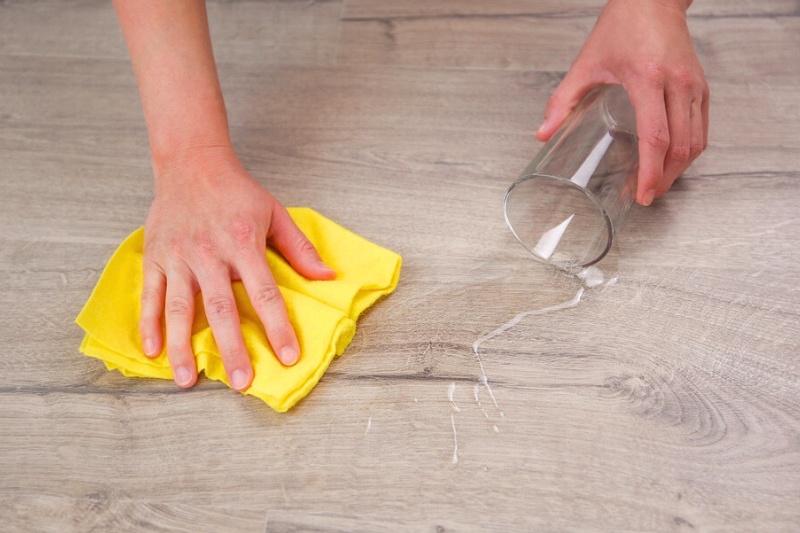
Laminated wood is made from multi-layer lumber boards stuck together to look like solid wood.
Glue is used between the layers, so laminate is less absorptive—water stains can often be eliminated with gentle cleaning.
If stronger cleaners are needed, laminate is also less sensitive to scratches and can handle harsher chemicals.
That said, we still recommend starting with the gentlest cleaning products and moving to harsher agents if needed. Here are the key steps in our recommended order:
- Blot the stain immediately: If the water spill is recent, the first step is to blot up as much moisture as possible using a clean, dry cloth. The longer water sits on the laminate, the more likely it is to penetrate and cause staining.
- Use a gentle cleaner: Mix a solution of warm water and a small amount of washing up liquid soap. Dampen a cloth with the solution and gently wipe the stained area. Avoid using excessive water, as laminate can be sensitive to moisture. Wipe dry once you’re done.
- Vinegar and water solution: Mix equal water and white vinegar. Dampen a cloth with the solution and gently rub the stain. Vinegar can help dissolve mineral deposits that might be causing the white water marks. Wipe the area dry afterwards.
- Bicarbonate of soda paste: If the vinegar was ineffective, make a cleaning paste by mixing bicarbonate of soda and water. Apply the paste to the stain and let it sit for a few minutes. Gently rub the paste with a soft cloth, then clean and dry the area.
- Try isopropyl alcohol: Dampen a cloth with isopropyl alcohol (rubbing alcohol) and gently rub the water marks on the surface of the wood. This can help dissolve some water stains and lift them from the wood fibres. Wipe when you’re finished to remove any residue.
- Commercial laminate cleaner: There are commercial laminate cleaning products available that are specifically designed to clean and maintain laminate floors and surfaces. Follow the instructions on the product for best results.
How to Remove Water Marks from Wood Veneer
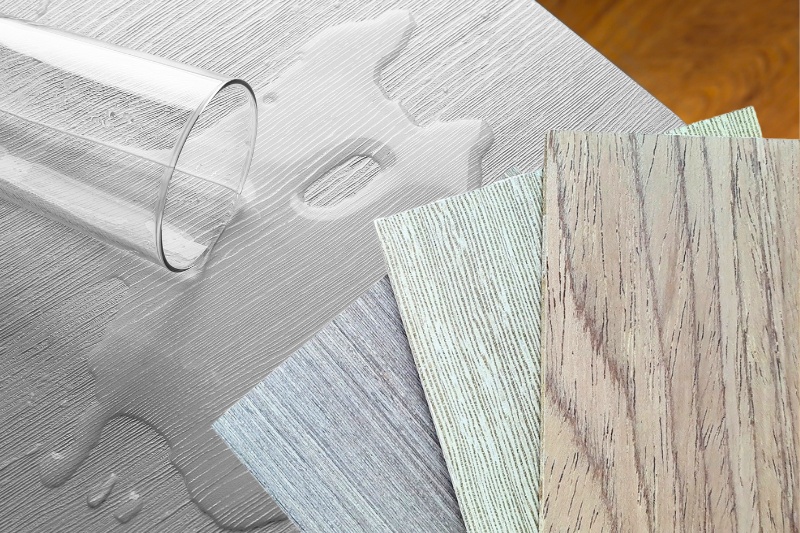
Wood veneer consists of a thin layer of real wood attached to fibreboard. Removing water stains from veneer requires extra caution as the fibreboard interior is more sensitive to moisture.
For this reason, it’s crucial to blot up any excess moisture with a clean cloth as soon as you notice the stain.
Wood veneer is also only really able to handle mild cleaning agents, such as washing-up liquid and water. These are the steps we recommend you follow for the best results:
- Soak up moisture: The sooner you address the water stain, the better your chances of success—especially on moisture-sensitive veneer wood. Act fast and use a clean cloth to wipe up the water spillage as quickly as possible.
- Use furniture polish: Often, furniture or floor polish is enough to remove white water spots from veneer. Apply a small amount to a clean cloth and gently rub over the water mark in a circular motion. The oil in the polish might help to blend and lift the white stain.
- Use a mild cleaner: Mix a small amount of washing-up liquid with warm water. Dampen a clean, soft cloth with the solution and gently wipe the stained area. Avoid excessive moisture and wipe dry immediately after, as veneer can be sensitive to water.
- Remove with heat: Using a hair dryer is often recommended for minor water stains. Set your hair dryer to a low temperature and move it across the stain at a 15 cm distance. Too much heat can cause heat marks on the wood, so monitor the process carefully.
- Commercial veneer cleaner: Commercial cleaners designed explicitly for veneer surfaces can remove light stains without damaging the wood or finish. Always apply the product as per the manufacturer’s guidelines for best results.
- Use DIY cleaners: If the stain remains, try using any of the laminate wood cleaners mentioned in Steps 3 to 5 of the previous section. Veneer is more delicate than laminate, so always perform a patch test on an inconspicuous area first.
Are Water Stains on Wood Permanent?

Water stains on wood can be permanent, and whether or not they are permanent largely depends on the severity of the stain. There are two main types of water stains on wood:
White water stains
These stains are caused by moisture penetrating the wood finish, creating a cloudy or hazy appearance. They can often be removed with simple household remedies, such as toothpaste, vaseline, and heat from hair dryers. If these methods don’t work, you might need to refinish the wood by sanding and reapplying a new finish.
Dark water stains
These stains are more severe and caused by water reacting with the tannins in the wood. They can be harder to remove and might require more aggressive methods, such as using wood bleach or oxalic acid.
Even with these powerful products, black stains can be difficult to fully remove without affecting the wood’s appearance.
Other Tips for Removing Water Stains on Wood

- Always test any cleaning method in an inconspicuous area first to ensure it doesn’t damage or discolour your wooden furniture or floors.
- Avoid using abrasive cleaners, scouring pads, or harsh chemicals, as they can scratch and remove the finish of the wooden surface.
- Prevention is key to avoiding water stains on wood. Use coasters, placemats, and tablecloths to protect the surface from moisture.
- Clean up spills promptly and avoid letting water sit on the wood for extended periods, ensuring you only deal with surface-level stains.
- Always know what type of wood you’re dealing with before tacking the water marks, as the finishes and compositions respond differently to cleaning products.
- If the water stain is particularly stubborn, you might consider contacting the manufacturer or a professional for advice on how to best address the issue.

Hannah has a passion for cleaning. She worked her way around Australia by cleaning hostels in exchange for free accommodation and used her cleaning skills to bag a job as a chalet host for a luxury ski company in France.

